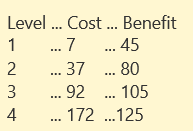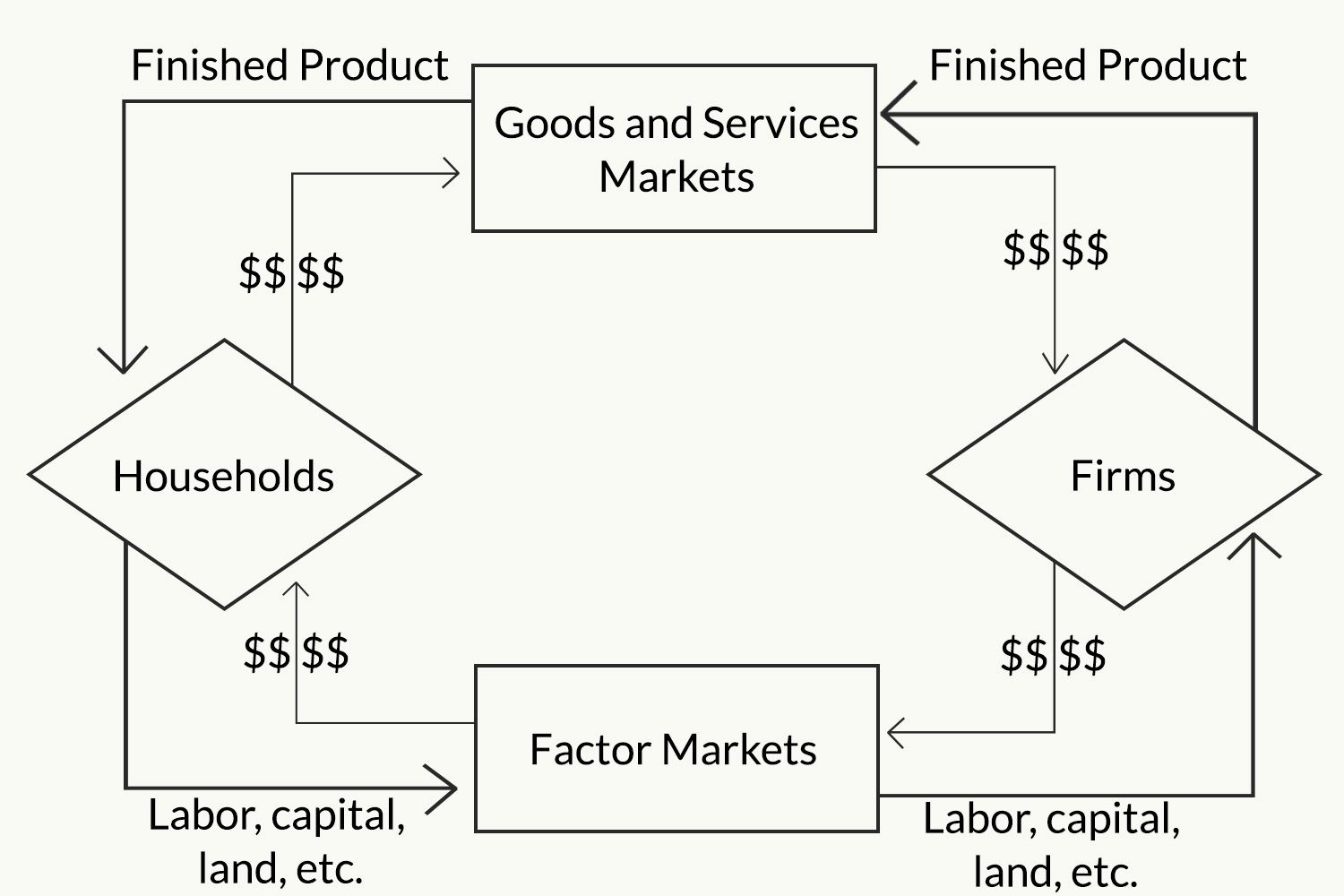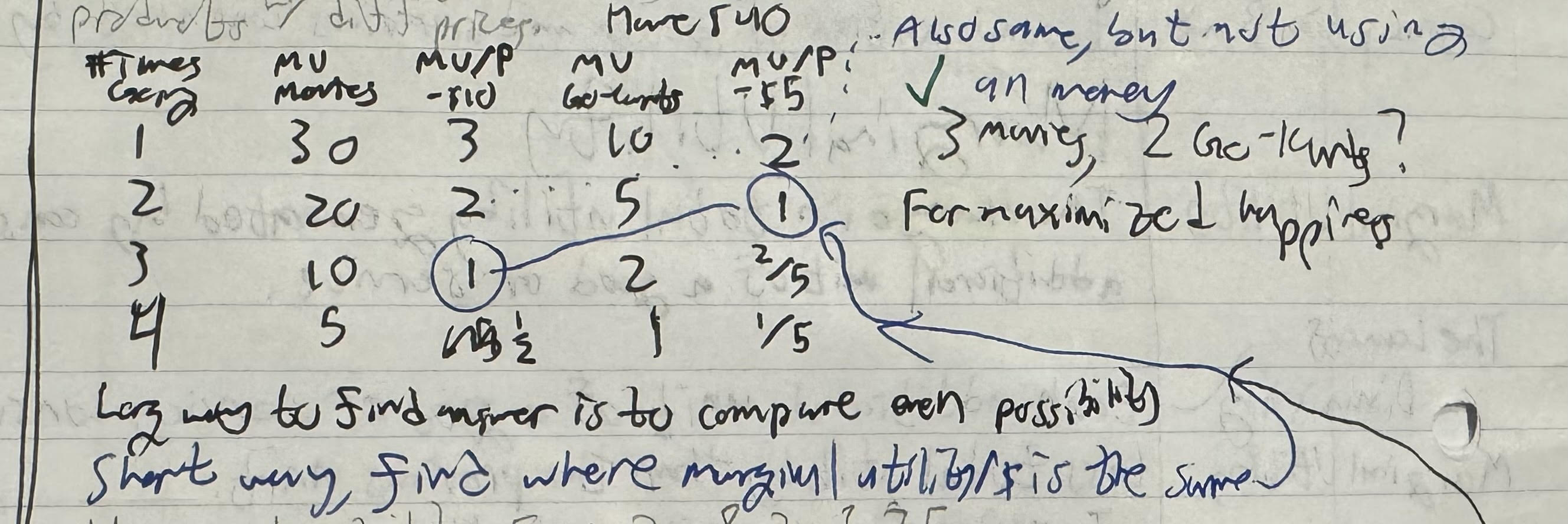AP Microeconomics - Quiz 1 (Unit 1)
1/54
Earn XP
Description and Tags
WIP 1.1 Intro to Economics, 1.2 Production Possibilities Curve, 1.3 Gains from Trade, 1.4 Circular Flow Model, 1.5 Economic Systems, and 1.6 Maximizing Utility Economics definitions, micro vs macro economics, positive vs normative economics, the 5 factors of production, trade-offs vs opportunity costs, marginal analysis, production possibility curves, straight line PPC vs Bowed Out PPC, sources of economic growth, absolute advantage vs comparative advantage, gains from trade, Output vs Input Question, Terms of Trade, Circular Flow Model, Households, Firms, Markets for Goods and Services, Factor Markets, 3 Fundamental Economic Questions, Free Market Economy, Command Economy, Mixed Economy, Roles of Government in Mixed Economies, Utility, Util, Consumption Bundles, Marginal Utility, Law of Diminishing Utility, Equation for Marginal Utility, Marginal Utility per Dollar Spend, and Budget Lines.
Name | Mastery | Learn | Test | Matching | Spaced |
|---|
No study sessions yet.
55 Terms
Scarcity
The fundamental economic problem of having unlimited human wants in a world of limited resources.
- When forced to choose in scarcity, choose what gives the "most bang for your buck."
Economics
Social science concerned with making choices and efficiently using scare resources to satisfy economic wants.
Not necessarily about money, just about making decisions.
Microeconomics
The study of small economic actors such as individual consumers, business firms, and specific markets
Such as a student deciding how to spend their time studying between two classes.
Macroeconomics
Study of the large economy as a whole or economic aggregates (Ex. Economic growth, inflation, unemployment)
Such as how one person fearing a recession and spending less does nothing, but when everybody fears a recession and spends less, then a recession is born.
Positive Economics
Statements based on facts. Avoids value judgments (Sees the world as it is).
Ex. School starts at 8:30am. This is positive because it is based on fact.
Normative Economics
Statements that involve value judgements (The world as it ought to be).
Ex. Based on studies, schools should start at 8:00am. While this is based on a scientific study, this idea is still more of an option than a fact.
This would be positive if it said “Studies show that kids are healthier when schools start at 8:00am”.
The Five Factors of Production
1) Land
2) Labor
3) Physical Capital
4) Human Capital
5) Entrepreneurship
Land
A factor of production that encompasses any natural resource used to produce goods and services.
Labor
A factor of production that encompasses work due by humans in exchange of wages.
Physical Capital
A factor of production that encompasses human resources such as building equipment, tools, and training.
Human Capital
A factor of production that encompasses improvements in the equality of labor due to education and training.
Entrepreneurship
A factor of production that encompasses the creativity and initiative to start a business and develop new goods and services.
Trade-offs
All of the alternatives that are given up when a decision is made.
Ex. You can either spend your time: a) taking a nap, b) taking an extra $20 shift, or c) dog sitting for $15. If you choose to dog sit for $15, you are giving up the $20 shift and the nap.
Opportunity Cost
The most desirable alternative given up when a decision is made.
Ex. You can either spend your time: a) taking a nap, b) taking an extra $20 shift, or c) dog sitting for $15. If you choose the $20 shift, then the ___ would be dog sitting for $15 as it has the second most worth.
Marginal Analysis
Decisions made in “one at a time increments” (When you hear ___ think “ additional” )
Ex. Should I sleep in one more hour?
How to do Marginal Analysis
Compare the marginal cost and the marginal benefits of each incremental choice (Ex. Hiring one more worker, studying one more hour, or eating one more cookie.)

In this situation, which level is best to go up to?
The answer is the 2nd level.
This is because the marginal cost from level 1 to level 2 is -$30 and the marginal benefit is 35, meaning the marginal benefit still outweighs the marginal cost.
However, the marginal cost from level 2 to 3 is -$55 while the marginal benefit is +25, meaning the marginal cost outweighs the marginal benefit and one should not move from level 2 to level 3.
Production Possibilities Curve (PPC)
A model that shows alternative ways an economy can use its scarce resources.
Straight Line PPC
If the opportunity cost is constant, then the resources are NOT specialized for producing either good and the PPC has a constant slope.
Ex: Making Pizzas and Calzones use the same resources.
Bowed Out PPC
If the opportunity cost is increasing, the resources are specialized and NOT easily adaptable to producing either good, making the PPC concave.
Ex: Making Pizza and Robots have different resources.
Sources of Economic Growth
1) An increase in the economy’s factors of production.
2) An increase in productivity due to better technology.
Absolute Advantage
The ability to produce the most goods or to produce goods using the least amount of resources.
Comparative Advantage
The ability to produce goods at a lower opportunity cost.
Ex. A skilled teacher doing menial tasks over important work has a high opportunity cost (That being the more important work). Meanwhile, a student aide would have a lower opportunity cost for doing the same menial work since they are not sacrificing important work, giving them the ___.
Gaining from Trade
When individuals or countries specialize in producing goods for which they have a comparative advantage, total output increases and everyone is better off.
Output Question
Number of goods produced using a fixed amount of resources.
Ex. If you had 1 minute to do a task, how much could you accomplish in that time?
Input Question
The number of resources needed to produce one unit of output.
Ex. Producing 100 units per 1 hour.
O.O.O question.
Output: Other goes Over.
I.O.U. question.
Input: Other goes Under.
Terms of Trade
The agreed-upon rate of exchange of one product for another when countries trade (Ex. 1 ton of wheat for 1.5 tons of sugar).
This rate should be more than the opportunity cost for the seller, but less than the opportunity cost for the buyer.
Circular Flow Model
A model that represents the transactions within an economy as flows of goods, resources, and money between households and firms.
Households
A person or group of people that share their income. These own the factors of production.
Firms
Organizations that produce goods and services for sale.
Markets for Goods and Services
Physical or virtual markets where firms sell their goods and services to households.
Factor Markets
Markets where firms buy resources (Factors of production) from households (Ex. The labor market).
Households sell these and firms sell them.
Ex. Firms buy time from an employee to work for them.
How Households earn Income.
They do this from factor markets in the form of wages (labor), profits (entrepreneurship), interest (capital), and rent (land).
What the Circular Flow Model Looks Like
Model:

Three Fundamental Economic Questions
1) What goods and services should be produced?
2) How should these goods and services be produced?
3) Who consumes these goods and services?
Economic System
How society answers the fundamental questions about the production and distribution of goods and services.
Three Types of Economic Systems
1) Free Market Economy
2) Centrally Planned (Command) Economy
3) Mixed Economy
Free Market Economy
Production and consumption decisions are made freely by firms and individuals
Like literally buy and sell literally anything like Cocaine, grenade launchers, using child labor.
The US is not a free market.
The “Invisible Hand”
The idea that the free market regulates itself through competition and self-interest (By Adam Smith).
Laissez Faire
“Let it be” — A philosophy of limited to no government intervention in the economy.
Command Economy
A central authority (The government) makes special decisions about the production and distribution of goods and services.
Communism
An ideology that advocates communal ownership of the means of production and the elimination of private property and class. In practice, this is central planning plus an authoritarian government (Ex. North Korea, Cuba, and China?).
Mixed Economy
An economic system that combines the free-market with limited government intervention.
Roles of Government in a Mixed Economy
1) Protection of private and intellectual property.
2) Provide public goods (Socialized things like schools, parks, the police, etc.).
3) Health and safety regulation.
4) The Welfare system.
5) Promote competition.
Utility
A measure of the satisfaction a consumer gets from consuming goods and services.
Util
An artificial unit of satisfaction.
Consumption Bundle
A combination of goods and services consumed by an individual.
Marginal Utility
The change in total utility generated by consuming one additional unit of a good or service.
The Law of Diminishing Utiliy
Each additional unit of a good or service consumed adds less total utility than the previous unit.
An example of increasing marginal utility can be a thing in which you develop skills over time as you start from not enjoying the activity to enjoying it when you are good at it.
Equation for marginal utility
Marginal Utility = (Change in Total Utility) / (Change in Quantity)
Marginal Utility per Dollar Spent
The additional utility from spending one more dollar on a good or service. Calculating this allows one to compare products with different prices.
A quick way to find the highest possible utility is by finding where the marginal utility is the same

How to Choose the Utility Maximizing Consumption Bundle
The marginal utility per dollar spent should be equal for all goods and services in the consumption bundle.
(Marginal Utility x) / (Price x) = (Marginal Utility y) / (Price y)
What the Budget Line Represents
Shows the set of all consumption bundles available to a consumer who spends all of their income.
The best bundle is not necessarily clear just by looking at this graph.